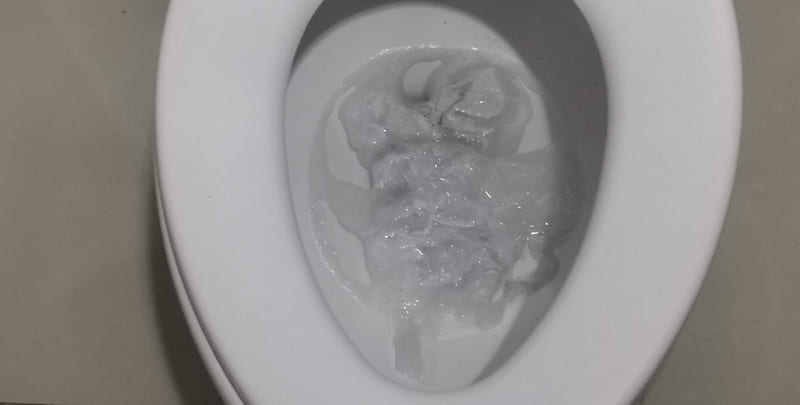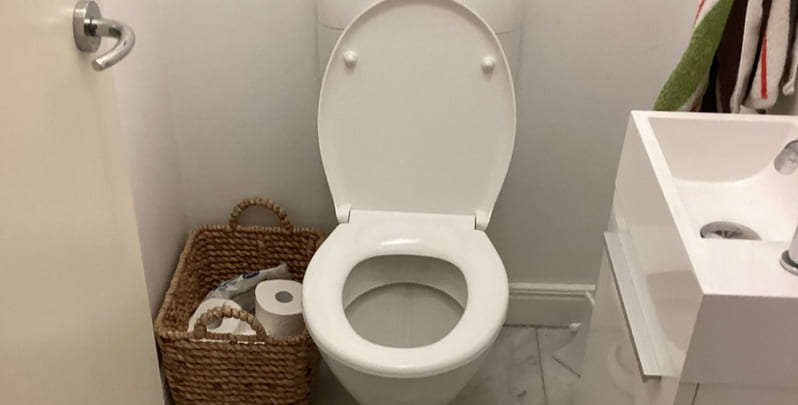If you've ever had to deal with a blocked toilet, you're not alone. Whether it was caused by a small accident or something more unexpected, clogged toilets can be a real headache, affecting both your plumbing system and your daily routine. It’s crucial to address the issue quickly to prevent further damage.
We understand that dealing with a stubborn clog can be incredibly frustrating. Many of us don't fully appreciate how much we rely on a functioning toilet until it stops working. Depending on the severity of the blockage, you might be able to resolve it using household items and save yourself the trouble of calling a plumber. Let’s explore some methods to unclog your toilet and restore its functionality. Just remember to keep those rubber gloves handy!
What Could Be Causing Your Toilet Blockage?
Before diving into solutions, it’s helpful to identify what might be causing the blockage. Common culprits include:
- Using excessive amounts of toilet paper
- Flushable wipes or baby wipes
- Tissues
- Any other foreign objects
Even though flushable wipes claim to be safe for flushing, many are made of materials that don’t break down easily in water. These can lead to persistent blockages. We highly recommend avoiding flushing these items down the toilet.

Effective Methods to Unclog a Toilet
Have you ever wondered how to unclog a toilet without a plunger? There are actually several approaches you can take beyond just reaching for the plunger. While plungers are certainly reliable and easy to use, there are other tools and techniques available. Consider trying:
- Making your own natural drain cleaner
- Using an auger or plumbing snake
- Creating a DIY plumbing snake
- Pouring in liquid dish soap and hot water (not boiling)
- Buying a store-bought drain cleaner (but only as a last resort)
- Even using the trusty toilet brush!
When attempting a DIY method, such as using dish soap and hot water, it’s important to proceed carefully and with a plan. Many of these methods carry risks. Improper use could damage your pipes or push the blockage further down the drain. If you feel uncertain about your ability to fix the issue, notice no improvement, or experience worsening symptoms, contact Metropolitan Plumbing for professional assistance.
The Importance of Proper Preparation
Being prepared is essential. Before attempting to unclog your toilet, ensure you have the right tools and a clear setup. If you’ve flushed once and notice the toilet isn’t draining properly, resist the urge to flush again. This will only lead to an overflow and a bigger mess. Lay down newspaper or paper towels to absorb any spills, and wear rubber gloves to protect your hands from contaminated water.
Unclogging a Toilet with a Plunger
We’ve discussed some non-plunger methods for unclogging toilets; now let’s focus on using a plunger effectively. Standard plungers with flat heads aren’t ideal for toilets—they require a specialized plunger with a flange to fit snugly into the drain opening. Before starting, run the plunger under hot water to warm up the rubber and improve the seal. Insert the plunger fully into the water, ensuring it covers the entire drain hole. Add extra water if needed.
Begin pumping the plunger rhythmically to loosen the blockage. It might take a few tries, but you’ll know when it works. Once you believe the clog is cleared, flush the toilet to confirm proper drainage.
Chemical Solutions for Clogged Toilets
There are multiple chemical solutions you can use to tackle a severe toilet blockage:
- Enzyme-based products
- A homemade mix of baking soda and vinegar
- Commercial drain cleaners
We recommend trying these in the given order. Enzyme products are the safest and most effective choice, breaking down organic material into liquid form. They’re widely available in hardware stores. Unlike harsh chemical cleaners, enzymes pose no risk to your pipes and are environmentally friendly. Follow the instructions on the packaging for optimal results.
Baking Soda and Vinegar
For those looking to avoid chemical-based solutions, baking soda and vinegar offer a viable alternative. You’ll need:
- 2 liters of hot water (not boiling)
- 1 cup of baking soda
- 2 cups of vinegar
Pour the hot water into the toilet bowl, followed by the vinegar and baking soda. Leave the mixture overnight. It will likely fizz significantly, but if everything goes smoothly, it should dissolve the blockage and clear the drain. Keep in mind, this method works best for organic matter. If the blockage remains after following these steps, you probably have a solid obstruction requiring more advanced intervention.
Hot Water and Dish Soap
Another simple approach involves combining hot water and dish soap. Start by adding a generous amount of dish soap into the toilet bowl. Next, slowly pour hot water from waist height into the drain to generate pressure. The heat and soap work together to break down organic debris. Allow the mixture to sit for a few minutes, then flush the toilet. The combination should alleviate the blockage, restoring normal function. Repeat if necessary, but if the problem persists, consider using a plunger or seeking professional help.
Using a Plumbing Snake
A plumbing snake, or auger, is a long, flexible rod equipped with a head attachment designed to navigate deep into your toilet’s drain. This tool is particularly useful when dealing with solid obstructions located further down the pipe. If the situation seems dire, it’s best to call in a plumber. However, if you’re determined to handle it yourself, here’s how:
Insert the snake into the drain until you feel resistance, indicating the location of the blockage. Twist the auger to rotate the sharp head, breaking the obstruction into smaller fragments. These pieces can then pass through the plumbing system more easily. Be prepared to clean up afterward—your toilet brush may come in handy here.

DIY Tools
Alternatively, you can create a makeshift auger by straightening a wire coat hanger and attaching a cloth or rag to one end. Insert the hooked end into the drain as you would with a plumbing snake. Since this method lacks the precision of a commercial snake, your success depends on physically pushing the blockage out of the way. Use caution, as this approach risks pushing the obstruction deeper into the drain.
We suggest reserving this method for emergencies, as it carries a higher risk of worsening the situation.
Calling in the Professionals
If you’ve tried everything and the problem persists—or worsens—it’s time to call in the experts. Persistent blockages can escalate into serious issues, so it’s wise not to delay. If attempts with a coat hanger or baking soda and vinegar haven’t resolved the issue, professional intervention is your best bet. Metropolitan Plumbing technicians are just a phone call away and specialize in resolving complex toilet problems efficiently. Not only can they fix the current blockage, but they can also ensure your toilet’s overall health. Their advanced equipment handles even the toughest clogs. Don’t wait—reach out today!
Please Note: This guide is intended for informational purposes only. Local regulations vary, so always consult your authorities or a qualified professional before attempting any repairs. For full details, review our Terms & Conditions.
--- I hope this version meets your expectations! Let me know if you'd like any further adjustments.Thermoplastic Polyurethane Film And Sheet
Thermoplastic Polyurethane Film And Sheet,Thermoplastic Polyurethane Material,Environmental Tpu Film,White Tpu Film Polyurethane
Xuchuan Chemical , https://www.xctpu.com